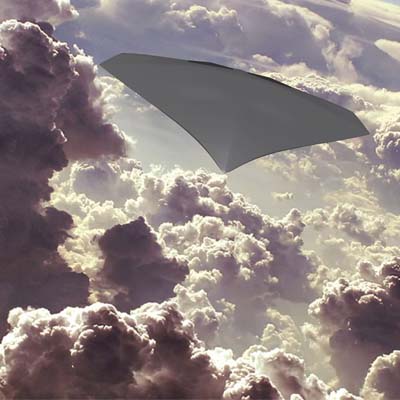The market for unmanned and autonomous vehicles continues to grow. The existing and potential applications pose exciting opportunities for industry.
Today, unmanned aircraft systems (UAS) are used for search and rescue, surveillance, mapping, crop spraying, environmental monitoring. Furthermore unmanned ground vehicles (UGV) have very diverse applications such as security and mine clearance.
Cranfield has a leading reputation in autonomous systems, established with over 15 years of research in this field. Our expertise covers all types of autonomous vehicles including airborne, ground and marine. Current areas of research include:
-
Sense and Avoid – to enable autonomous vehicles (both ground and air) to operate in non-segregated environments by being able to determine any course or altitude change to avoid intruders or to autonomously manoeuvre the UAS/UGV to eliminate the conflict.
-
Insertion into Airspace – current airspace is highly regulated and UAS must comply with regulations to operate safely and share the same airspace with other air traffic.
-
Navigation and Path Planning – development of guidance and navigation algorithms which enable autonomous vehicles to operate efficiently and safely in complex environments. This includes development of trajectory management algorithms for different elements of flight i.e. coordinated with other vehicles, optimised search or optimised routing.
-
Energy Management – exploring novel power generation concepts, including innovative electrical machine topologies, generation systems with multiple components and alternative means of power generation, such as fuel cells, solar or thermo-electric power. We also undertake research towards efficient power management and providing energy autonomy, allowing the electrical system to continue to meet the demands placed upon it regardless of the state of the power system and the environment.
-
Autonomous Maintenance and Health Management – development of technologies that will improve the reliability and availability of complex systems and minimising downtime. We aim to improve the through life cost required for the operation of autonomous vehicles and develop prognostic/diagnostic algorithms for integrated systems health management.
-
Network Decision Systems – development of algorithms and architectures that enable communication and coordination between multiple agents in the presence of incomplete and imperfect information.
-
Cyber Physical Systems – cyber/physical couplings result in highly-dynamic evolution of cyber and physical properties. The analysis and design of cyber-physical systems requires understanding of the joint dynamics of computers, software, networks and physical processes.
We work with a number of organisations across various sectors including defence, military, aerospace, transport, research councils and UK/European Government. We often collaborate with other Universities on projects, for example Loughborough and Imperial College.
About our research
Our greatest strength is the ability to combine the academic rigour and long-term perspective of a university with the commercial and business focus of industry.
Our excellence in strategic and applied research has enabled us to make significant contributions to the world around us for over 60 years. We address real life challenges and focus on research that is of strategic and practical importance.
We provide a supportive research community for students and our academic work is regularly published in journal article, book or thesis form.
Our facilities
Our facilities include the new Autonomous Vehicles Laboratory which is equipped with a netted area for flight tests and a variety of sensors, used for testing in the areas of guidance, navigation, control and surveillance. This facility was launched in 2013.
The Off-Road Dynamics facility can provide a controlled, repeatable and realistic environment for validation of any autonomous system operating off-road. Many challenges exist where a vehicle may lose traction or stability and these can be simulated and tested within the facility.
We also have access to industry-standard software as well as in-house codes. Our computational capabilities are powered by the University’s High Performance Computing facility.
Working with us
Business can work with us on research of all scales from sponsorship of MSc student projects to exploratory studies extending over several years.
Our research focuses on autonomous system design, calculation of payloads and operations for systems and sub-systems including airframes, avionics and guidance, control and navigation. We have experience in developing algorithms for sensor and data fusion, information management and target tracking and estimation.
Our research also includes modelling, design and analysis of multiple vehicle reasoning, verifiable autonomy and distributed estimation and control in networked systems.
Our impact
Cranfield led the winning team ‘Stellar’ in the Grand Challenge set by the Ministry of Defence. The contest was designed to find the best robotic air and ground vehicles for identifying threats such as snipers and roadside bombs. Unmanned aerial vehicles are already used by the military to gather intelligence; however gathering of ground-based information is crucial. These ground vehicles can be deployed in urban environments to assist troops in identifying potential dangers whilst protecting military and civilian lives.
Teams were given no prior intelligence of the environment where the vehicles were to be tested which is typical of military situations. Each team had one hour to identify the location of targets such as snipers, vehicles mounted with heavy weapons, enemy patrols and explosive devices.
Cranfield created software for automatic target detection and systems for co-ordination of vehicle guidance and execution during the course of the 12 months each team was given to develop their prototypes.
Team Stellar used a 7kg high-altitude robotic plane to first map the village before launching smaller, 1.8kg robots to fly between the buildings and take video and thermal images. The team also deployed an autonomous mini-tank for more detailed reconnaissance. Using sophisticated communications systems, our vehicles were able to relay this information back to the team on the ground.
Baroness Ann Taylor, Minister for Defence Equipment and Support, said, "We are proud to crown Team Stellar the winners of MOD's most prestigious competition for battlefield innovators. They follow in the footsteps of RJ Mitchell, a great British inventor who pushed back the frontiers of science to develop the prototype of the Spitfire. It is this type of vision and dedication which makes the United Kingdom a world leader in science and technology."
The winning team included partners such as Selex Gailleo, Marshall SDG, TRW Conekt, Blue Bear Systems Research and Stellar Research Services.

